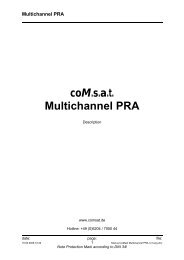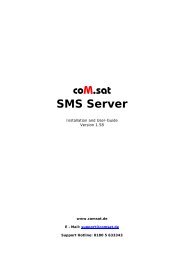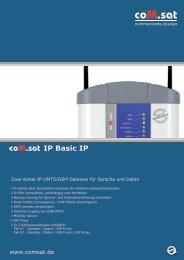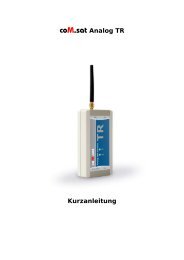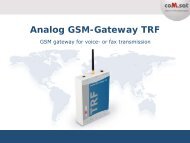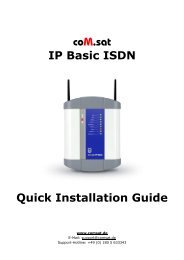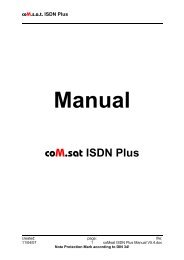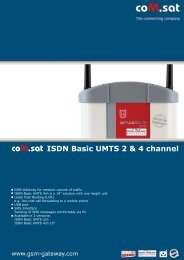coM.sat ISDN Basic UMTS
coM.sat ISDN Basic UMTS
coM.sat ISDN Basic UMTS
Create successful ePaper yourself
Turn your PDF publications into a flip-book with our unique Google optimized e-Paper software.
<strong>coM</strong>.<strong>sat</strong> <strong>ISDN</strong> <strong>Basic</strong> <strong>UMTS</strong><br />
3.3.6 Outgoing calls<br />
Figure 12: Outgoing calls<br />
A separate card is provided for the configuration of outgoing calls in the same way as<br />
for incoming calls.<br />
The type of speech communication is selected in the “Bearer Capability“ box of this<br />
card. The “Accept Speech“ option should then be selected if the <strong>coM</strong>.<strong>sat</strong> <strong>ISDN</strong><br />
<strong>Basic</strong> <strong>UMTS</strong> is connected to a telephone system to which only <strong>ISDN</strong> telephones are<br />
connected. If analogue telephones are also used, both options should be selected.<br />
On the other hand, no speech communication is possible if both options are<br />
deactivated. This makes sense if only SMS is to be exchanged.<br />
The assignment of the B-channels to the GSM/<strong>UMTS</strong> channels is then defined in the<br />
“B to GSM/<strong>UMTS</strong> Channel“ box. Fixed assignment determines that the first B<br />
created: page: file:<br />
11/04/07 34 <strong>coM</strong><strong>sat</strong> <strong>ISDN</strong> <strong>Basic</strong> Manual <strong>UMTS</strong>.doc<br />
Note Protection Mark according to DIN 34!




